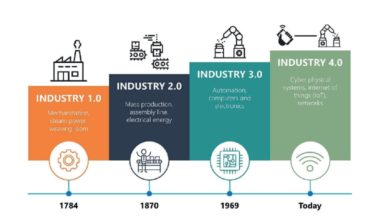I was in Hamburg about a month ago at the INTTRA Tech Summit and I heard something that was music to my ears. Martin Gnass, Managing Director of IT at Hapag Lloyd, commented that implementing new IT systems wasn’t the problem we face as an industry, but rather that sharing data was the challenge we face. I couldn’t have said it better myself. In addition, I’ve noticed that a good deal of time at the upcoming TOC Europe Tech TOC conference is going to be discussing standardization and data sharing.
With these two things in mind, I thought it was time to pick up my last article on collaboration in the container terminal and shipping industry and see if it was still relevant. If you haven’t read that article, I’d suggest you start there or this article might not make complete sense as I’m picking up where I left off – and that was with looking at the aviation sector for inspiration.
When Leg Room Doesn’t Matter
Looking to the future, A-CDM does drive a broad range of benefits to many stakeholder groups. However, a key user group was unintentionally missed. While passengers benefit from A-CDM, it wasn’t something that was made clear. For example, operationally speaking, a flight is held on the ground for two hours due to severe weather forecasted at the destination airport at its scheduled time of arrival. This saves the airline fuel. It allows the origin airport to move the aircraft to a remote stand and free up the gate. It allows the destination airport to adjust their resource requirements in advance. The operational, environmental, and financial benefits are clear.
However, all the passenger will see is a flight remark on a display reading, “Delayed.” This has the complete opposite effect of what was intended. Instead of the passenger thinking, “Great, I’d rather be stuck on the ground than circling my destination with no leg room,” they begin to stress about missed opportunities as the delay reasons aren’t clear to them. In addition, their family may get stuck circling in the car or, worse, paying an absurd airport short-term parking fee to wait (and that’s not to mention the coffee that costs 300% more than what you’d pay anywhere else). The good news here is that a newer A-CDM 2.0 model has been proposed to address this shortcoming.
But We All Want Leg Room
It would be straightforward for the shipping industry and container terminal world to bring together the biggest vendors, container terminal operators, and shippers to hash out a plan for standardization – and this would be a great first step, as was A-CDM version 1. But we wouldn’t be learning from the aviation industry’s mistakes, would we?
To successfully implement a standard, it must be something that all interested parties are involved in developing. Without input and subsequent buy-in, the standard will fail to fly. Excluding smaller vendors, smaller ports, and smaller shippers is like forgetting the passengers. They’ll be expected to play by the rules – they might even benefit from those rules – but they may not see that fact because they’re too busy worrying about the impact it will have on their businesses.
Cleared for Takeoff
In short, by developing and implementing a data and interface standard solution that provides benefits to terminal operators, port authorities, shippers, vendors, truckers, rail operators, and the senders/receivers of goods, the shipping industry has an opportunity to drive network-wide efficiency while also improving customer service – a win-win. To get there, we must take the perspective that inclusion rather than exclusion is the best path forward. Admittedly, it is the harder path filled with debate and disagreement – but at the end of the journey, the destination will be worth it.


